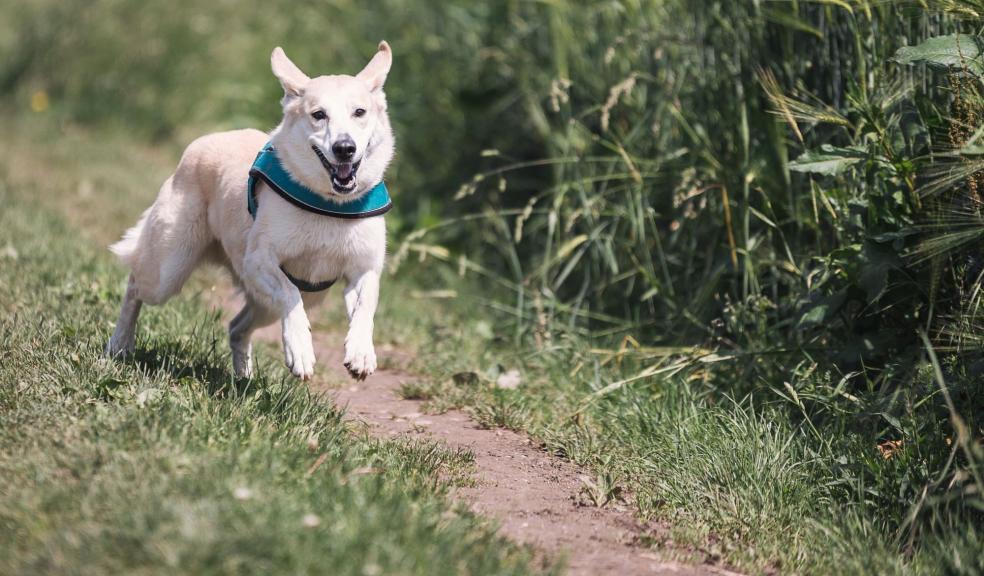
The new TikTok walking trend is beneficial for you and your dog’s health
Walking is a great way to relax and clear your mind, and it's even better with your dog. So, with 3.4 million views on TikTok, the 'decompression walk' trend encourages dog owners to let dogs off their lead and roam free in the countryside.
Decompression walks are a great activity for you and your pooch to embark on during a holiday. But how does this trend benefit your pooch's well-being?
To find out Canine Cottages quizzed their resident dog expert, Canine behaviourist, Dr Emma Scales-Theobald, on the benefits of decompression walks, and how far you should walk your dog based on its size and breed.
What is a 'decompression walk'?
Decompression walks are usually walks that last an hour or two where you can let your dog roam free without a lead in a large area or walking field.
How can this benefit my dog?
Dr Emma explains that 'decompression walking' can decrease your dog's stress and anxiety because it gives your dog a chance to perform their natural behaviours. It provides mental stimulation by interacting with the environment, walking and smelling what they want.
So, what should dog parents consider before taking their dog on a long walk? Dr. Emma provides her 5 top tips below.
Don't hesitate though. If your dog is suited to a shorter burst of exercise, why not visit a dog park or meet up with a similar dog breed and let them run together?
1. Evaluate your dog's fitness
"It's important to understand your dog's fitness", says Dr Emma, "How long and far you walk your dog depends on its breed, age, weight, stamina and environment.
"As decompression walks are normally around an hour or two hours long, you should build up the length of time spent on walks slowly to increase your dog's stamina to avoid overexercising or risking any injuries, especially puppies, whose joints are still developing."
"However, breeds like Labrador retrievers, Bernese mountain dogs, and springer spaniels, along with energetic ones like Australian shepherds, border collies, and beagles, are great for hikes due to their high stamina."
2. Know the signs of overexertion
"Dogs are great at hiding pain and discomfort, particularly if they are having fun and therefore might not show signs that they're achy or getting tired.
Emma advises preventing overexertion by "monitoring signs of tiredness like slowing down and excessive panting. If they sleep and rest for the day, they've likely reached their stamina limit. Over-exercising your dog can cause back injury and respiratory or cardiovascular problems. Be wary with the elderly, overweight and short-muzzled (brachycephalic) dogs."
"Extra caution is advised in hot weather where the risk of overheating is higher."
3. Consider any hazards
"Decompression walking is encouraged to be an off-lead activity; however, this may not be safe for your dog. It would be best if you considered all hazards depending on the environment and strength of your dog's recall."
"Even if your dog's recall is typically good, your dog may behave differently when let off-lead in a new and exciting environment. It might be safer to have your dog on a flexi-leash to allow your dog to roam freely but stay within sight."
It's important that your dog has a good recall, as you will want to be cautious of other dogs that may be on a lead.
"If you're visiting a new location, make sure to check what's around the corner to ensure full safety and look out for other animals."
4. Packing the correct equipment
"When going on long walks with your dog, ensure you bring all the necessary equipment:
- Collapsable water bowl
- Poo bags
- Dog first aid kit
- Towel
- Treats
"Don't leave for your walk without your phone fully charged for calls in an emergency, using maps and taking any photos of your adorable pooch."
"Make sure your dog is wearing an identification tag with up-to-date information. You may wish to get a GPS tracker for your dog's collar or harness to be extra safe.
"Depending on the weather, your beloved pooch might prefer to wear a coat to keep dry and warm, and it could be worth them wearing little booties on their paws if it is snowy or icy."
Ensure you haven't missed anything from your doggy checklist here:
5. Taking regular breaks
"For longer dog walks, schedule breaks, ensure water intake, and gradually extend walk durations.
"Be cautious about taking your puppy on long walks until they are at least one year old, and their growth plates have closed. You should consider carrying your puppy for parts of the walks, this will strengthen mental stimulation without the stress on their body.
"If possible, it's ideal to get out on these types of walks once a week, or at least once a month, to help increase the benefits. It can also help to strengthen your bond with your dog by sharing the experience.
Commenting on their new partnership with Dr Emma Scales-Theobald, Digital PR manager at Canine Cottages, Sarah Pring had this to say:
"We understand the importance of mental and physical wellbeing, so we're thrilled that Dr Emma can bring expert advice to dog owners and holiday-goers alike. The decompression walk offers a stress-free stroll, enhanced by the beautiful landscapes the UK has to offer, allowing you to focus on your and your pooch's well-being."
To read more about the UK's best dog walks, please read this Canine Cottages blog







